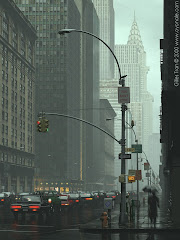
Era Vulgaris and editor Jason Louv have published Ultraculture Journal One, what many of us in the marginal community hope will be the first in a long series of journals devoted to some of the most important esoteric ramblings presently available. From the authors...
Ultraculture Journal One collects under one cover the most volatileBold assertions, to be sure. I have been perusing the articles, and with my limited understanding about this material must say that much of it is highly advanced, hence the above warning that it "will change you on a cellular level."
and direct magickal writing currently available in the English language. It will change you at the cellular level. You have been forewarned.
Check out the review section toward the end, where Louv covers some recently published books. He gives a good overview of 2012: The Return of Quetzalcoatl by Daniel Pinchbeck. For those who haven't heard of his work, you can see an amusing interview of Pinchbeck by the illustrious Colbert here. Colbert gets his grill on, as usual, but Pinchbeck dodges the fire well enough. Be sure to check out part two of the interview here.
Also in the review section is a fascinating look at Victor & Victoria Trimondi's detailed exposé of the Myth of Shambhala and the politics of Tibetan Tantra, as seen in the life and times of the current Dalai Lama. The work is titled The Shadow of the Dalai Lama: Sexuality, Magic, and Politics in Tibetan Buddhism", and was published in Germany in 1999 by Patmos Verlag. Though not yet published in book form in the English language, it is available in English online. I must say, beware the writing, as it might shake your faith in Tibetan Buddhism (being a acolyte historian, I am still trying to independently check some of their sources). From the introduction...
The practice and philosophy of Buddhism has spread so rapidly throughout the Western world in the past 30 years and has so often been a topic in the media that by now anybody who is interested in cultural affairs has formed some sort of concept of Buddhism. In the conventional “Western” notion of Buddhism, the teachings of Buddha Gautama are regarded as a positive Eastern countermodel to the decadent civilization and culture of the West: where the Western world has introduced war and exploitation into world history, Buddhism stands for peace and freedom; whilst Western rationalism is destructive of life and the environment, the Eastern teachings of wisdom preserve and safeguard them. The meditation, compassion, composure, understanding, nonviolence, modesty, and spirituality of Asia stand in contrast to the actionism, egomania, unrest, indoctrination, violence, arrogance, and materialism of Europe and North America. Ex oriente lux—“light comes from the East”; in occidente nox—“darkness prevails in the West”.
We regard this juxtaposition of the Eastern and Western hemispheres as not just the “business” of naive believers and zealous Tibetan lamas. On the contrary, this comparison of values has become distributed among Western intelligentsia as a popular philosophical speculation in which they flirt with their own demise.
You can find the Trimondi's resume here. As the authors were saying, this stuff might start morphing your nerves, so beware the words, as they have a tendency to become swords. Here is Louv's assessment of the book...
1. The entire PR campaign of Lamaism in the West masks, and furthers, the goal of the fourteenth Dalai Lama to become the Adi Buddha, the totalitarian ruler in which all secular and spiritual power is concentrated.Yes, beware, but also be amused. You can download the entire 419 page Ultraculture journal from the like above. Happy reading!
2. The Kalachakra Tantra (the central practice of Vajrayana) focuses on the concentration of the universe (both sexes, all planets, time and space) within the androgynous body of the Adi Buddha, so that literally all internal processes of the Dalai Lama thereby effect world events (as above, so below—and how!).
3. Sexual and ecological politics in Tibet have always been far away from what is publicly presented (Mahayana “peace love tolerance” public mask, Vajrayana “dominate the world” reality). Sexual politics have been the systematic oppression and hatred of women and their continual use as power batteries, with their energy being farmed and alchemized into political power via sexual magick. Ecological politics have been the same—the suppression and violation of the mother earth goddess (srinmo).
4. Tibet and Nazi Germany, or Esoteric Hitlerism as it is today, were and still are bedfellows. (Hitler as Kalki as Kalachakra.)
5. The Kalachakra is a process by which the entire world (especially Islam) will be purified by fire and transformed into a Buddhocracy by the twenty-fourth century. (Same old scheme that Christianity, Islam, etc. are running and that the Dalai Lama pretends to be above.)
Namaste.







